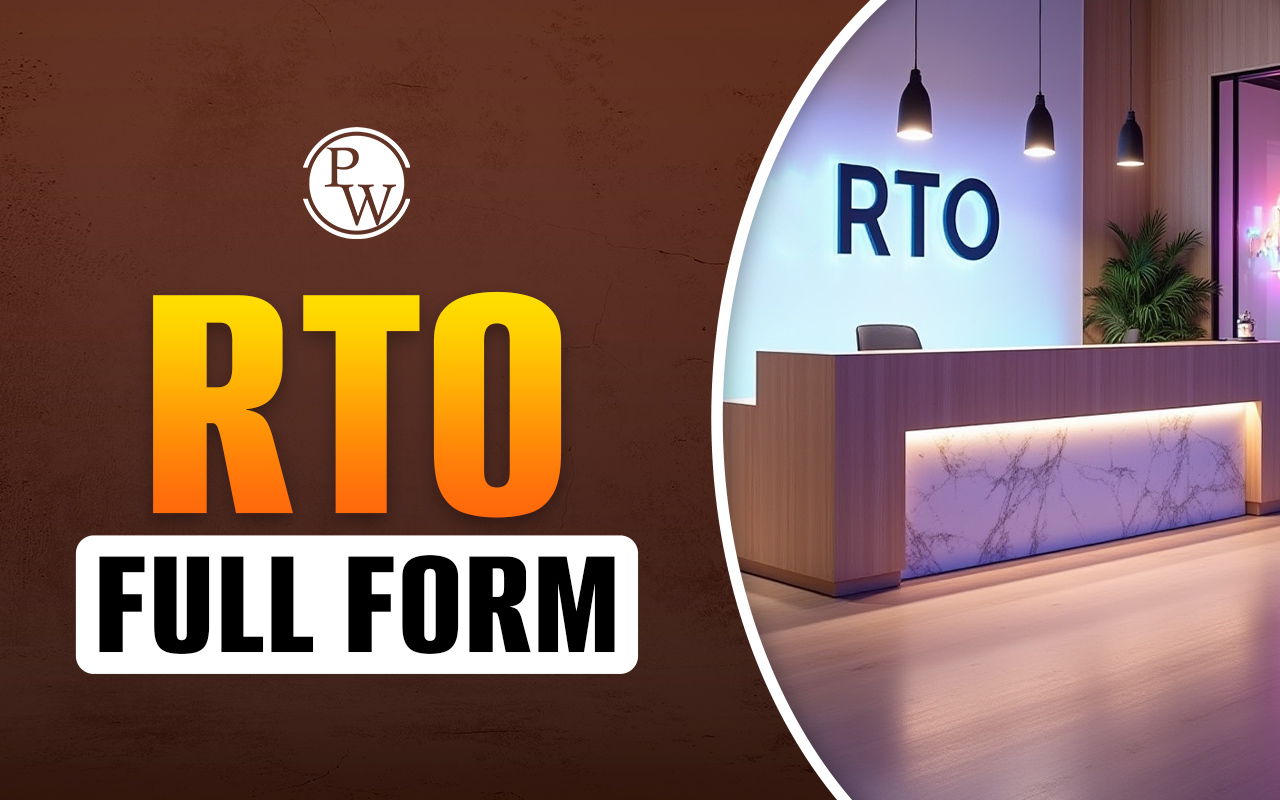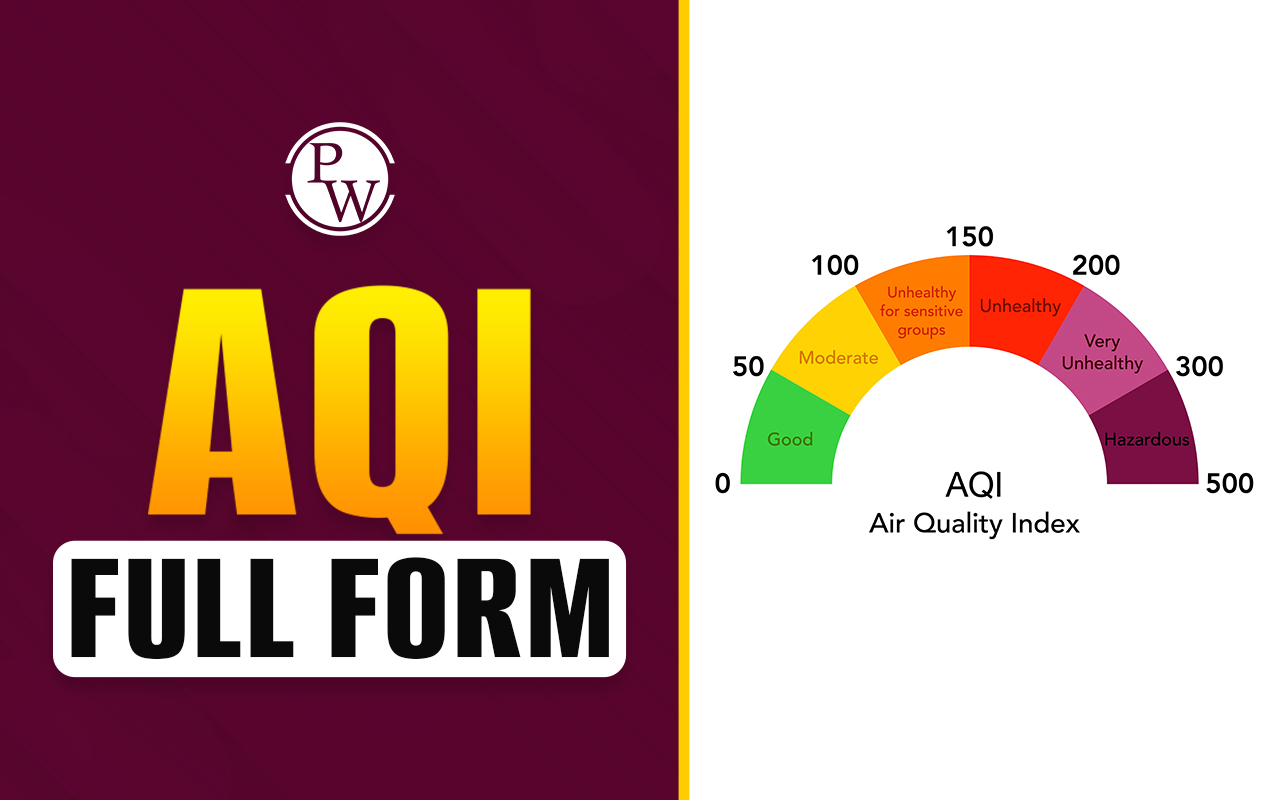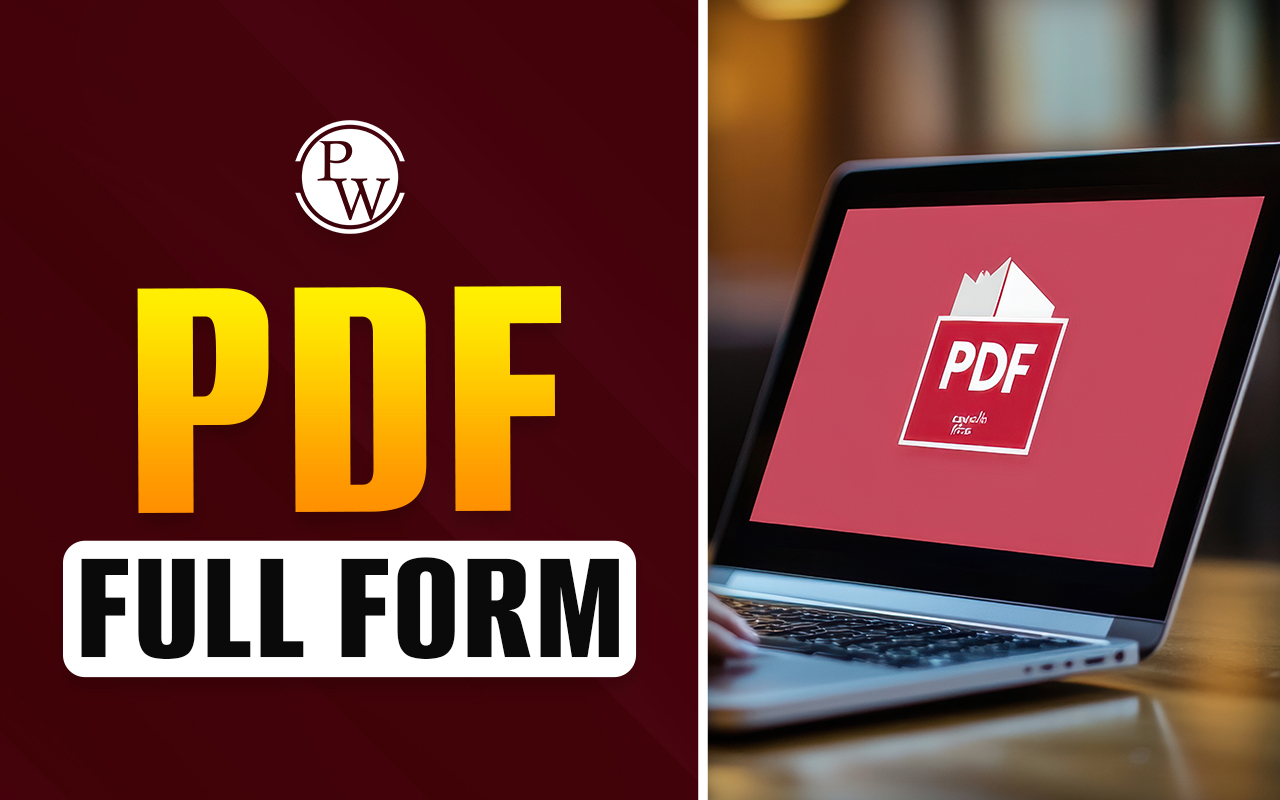
AQI Full Form: The Air Quality Index, or AQI, is a simple number that shows how clean or polluted the air is. It helps people understand air quality levels in their area. AQI turns complex pollution data into easy information so everyone can know when the air is safe or unhealthy.
Monitoring AQI is important for protecting your health, especially for children, the elderly, and those with breathing problems. It is an index indicating air pollution levels and is generally established between the figures 0 and 500. A figure below 100 can therefore be said to indicate good air quality, while higher figures indicate poor air quality.
AQI Full Form
AQI is a tool used by government agencies to measure how polluted the air is at a given place and time. The AQI helps communicate to the public the level of air pollution and its potential health effects.
The full form of AQI is
-
A stands for Air
-
Q stands for Quality
-
I stands for Index.
Air Quality Index Meaning
It denotes the number that defines how clean or polluted the air is in a definite place. One of the ways in which the populace can be reached by probable health risks from certain pollution levels is through this instrument. The instrument includes measuring levels of air pollution and potential health risks. The AQI is defined by the concentrations of a number of air pollutants that yield a relatively simple and clear instrument for the understanding of air quality.
AQI Definition and Explanation
The AQI is an index of air pollution levels generally from 0-500. Low figures of AQI mean good quality air, while higher numbers represent poor air quality. The state's AQI is based on pollutants of ozone, particulate matter, carbon monoxide, sulfur dioxide, and nitrogen dioxide. The usage of AQI is basically to inform and defend the citizens concerning the air quality.
The index indicates how much air is safe or harmful to breathe in. It adopts a blend of color codes and numbers ranging from green, meaning good air quality, to red-unhealthy in terms of air-and maroon, meaning very hazardous levels needing precaution.
Roles and Importance of AQI
The AQI is a tool that measures air pollution clearly for a specific place and time. It tracks pollutants like ozone, dust particles, and nitrogen dioxide. Every day, AQI analyzes detailed data to warn people about health risks. This helps detect pollution patterns and target actions in affected areas. By monitoring pollution levels regularly, AQI helps protect health by making air quality visible and understandable.
Key Roles of AQI
AQI helps in determining lots of information about air. It also gives an alert about pollution. Listed below are key roles of AQI:
Public Health Protection: AQI provides clear information on air pollution levels to protect sensitive groups from harmful exposure. By signaling when air quality is poor, it prompts people to reduce outdoor activities or take precautions like wearing masks.
- Air Pollution Communication: Regulatory agencies use the AQI to communicate complex air pollution data in a simple, understandable format using colors and descriptive categories ranging from "Good" to "Hazardous."
- Pollution Monitoring: AQI continuously tracks key pollutants, including ozone, particulate matter (PM2.5 and PM10), nitrogen dioxide, carbon monoxide, and sulfur dioxide. This data helps in identifying pollution trends and problem areas.
- Emergency Response: When AQI reaches hazardous levels, authorities can take swift action such as issuing health advisories, limiting industrial emissions, or recommending reduced outdoor activity.
- Awareness and Action: AQI raises public awareness about pollution sources and encourages behavioral changes to reduce pollution, such as using public transit or limiting vehicle use.
- Policy Support: Governments use AQI data to plan and enforce air quality regulations and pollution control measures targeted to specific regions.
Importance of AQI
The AQI plays a critical role in safeguarding environmental and human health. It helps detect and warn against short-term spikes in pollution that can cause immediate health problems. The index also assists in long-term air quality management by guiding policies to improve air standards. In regions with frequent pollution spikes, the AQI empowers citizens to make informed decisions about when and how to protect themselves and their families.
AQI Values and Their Health Impact
Very high levels of AQI (300+) can lead to considerable risk for people who are healthy before giving way for respiratory complications later. Continuous and prolonged exposure leads to chronic diseases and raises awareness of the need to know AQI data for asthma, heart problems, and lung cancer.
-
In the spectrum from 0 to 500 rating AQI, different grades of pollution are indicated. When these values drop below 50, good air quality is essentially defined, with health problems remaining only a thought.
-
The more moderate values do encourage people to stay inside, with less than great air reported between 51 and 100.
-
Anything above the 100 threshold implies unhealthy concentrations with the initial effects on children, the elderly, and those suffering from phantom number of disruptions in respiration.
Pollutants To Be Considered In AQI
AQI is basically measured during the high risk of pollution. This high-risk pollution contains some harmful pollutants that adversely affect one’s health. AQI is based on the values of key air pollutants that are harmful to health:
-
Particulate Matter (PM2.5 and PM10): Tiny particles that affect the lungs and heart.
-
Ozone (O3): Irritates the respiratory system; aggravates asthma.
-
Nitrogen Dioxide (NO2): From fossil fuel combustion, causing lung irritations.
-
Sulfur Dioxide (SO2): From burning coal/industries that affect breathing.
-
Carbon Monoxide (CO): Reduces blood oxygen; high levels are fatal.
How is AQI Calculation Done?
To calculate the AQI, concentrations of the different pollutants are measured independently. The sub-index for each pollutant concentration is derived from a standard formula. The overall AQI is derived from the highest sub-index level among the pollutants being monitored, which puts them into organization by ranges such as good, moderate, unhealthy, and hazardous.
The whole exercise is done simply and with utmost accuracy in a single numerical index reflecting the risk for pollution. Monitoring stations gather data continuously; the AQI updates are often made during the day to inform public health decision-making and warnings.
AQI Full Form in Hindi
AQI का फुल फॉर्म है "Air Quality Index", जिसे हिंदी में "वायु गुणवत्ता सूचकांक" कहा जाता है। वायु गुणवत्ता सूचकांक एक संख्या या मापदंड है, जो हवा में मौजूद विभिन्न प्रदूषकों के स्तर का आकलन करता है। यह सूचकांक हवा की सफाई या प्रदूषण की स्थिति को सरल भाषा में बताता है। AQI के माध्यम से आम लोग आसानी से समझ सकते हैं कि उनके क्षेत्र की हवा शुद्ध है या स्वास्थ्य के लिए हानिकारक है।
AQI को मापने के लिए मुख्यतः पांच प्रमुख प्रदूषकों जैसे PM2.5, PM10, ओजोन (O₃), सल्फर डाइऑक्साइड (SO₂), नाइट्रोजन डाइऑक्साइड (NO₂), और कार्बन मोनोऑक्साइड (CO) की गणना की जाती है। इन प्रदूषकों की माप को एक निश्चित मानक स्केल में बदला जाता है। उसके बाद, उनमें से सबसे अधिक प्रदूषणकारी घटक की अधिकतम वैल्यू के आधार पर समग्र AQI निर्धारित किया जाता है। फिर AQI को विभिन्न स्तरों (जैसे: अच्छा, संतोषजनक, मध्यम, खराब, आदि) में दर्शाया जाता है।
AQI की सहायता से सरकारें और एजेंसियां लोगों को स्वास्थ्य संबंधी सलाह और चेतावनियां जारी कर सकती हैं ताकि लोग समय रहते सतर्क हो सकें और अपनी सुरक्षा के लिए कदम उठा सकें।
The Air Quality Index shall be held as an adequately satisfactory and workable instrument for monitoring and understanding air pollution as any available option. It provides a simple mode of translating complex pollutant data into scales easy enough for people to recognize whether the air is clean or unsafe. Awareness of AQI will be of encouragement for the public to back cleaner air and the adoption of safer practices for a healthier life.
AQI Full Form FAQs
What pollutants are measured by AQI?
What is the actual full form of AQI?
All major pollutants refer to concentration in measuring or measurements; of course, the highest sub-index is derived and is considered the final result of the AQI.
Why is AQI important to health?
What AQI score would be termed good?










